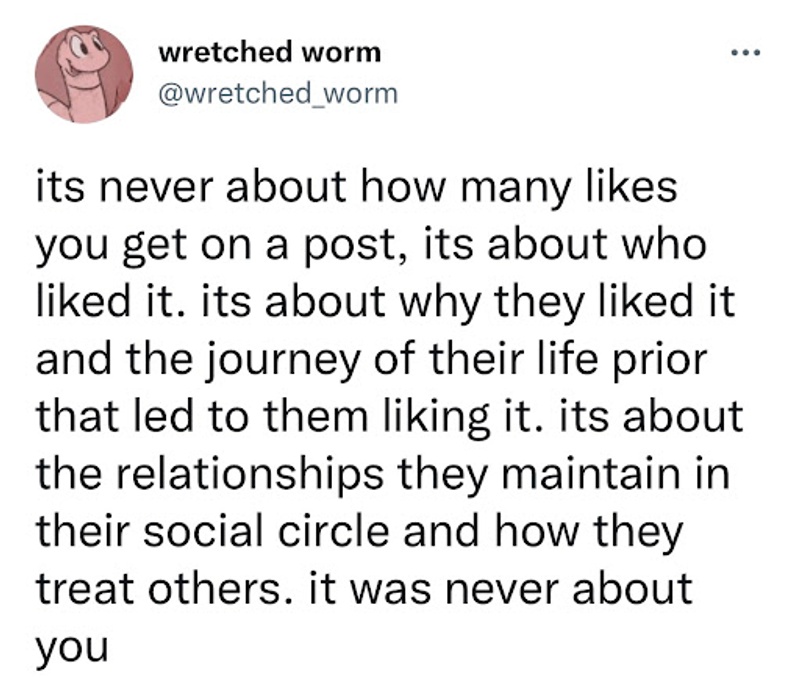On how technology influences creativity
Prelude
Caia Hagel is a digital anthropologist, magazine editor and slow book writer. She co-authored Girl Positive, a Sophie Trudeau-endorsed book lol that uncovers how girls are shaping a new world. She is co-founding editor-in-chief of SOFA, a youth culture magazine and talk series that assembles wissenschaft and weltgeist in chatrooms with strangers while exploring ideas about the future. Her presentation on Selfies at Forum D’Avignon Paris contributed to a Bill of Digital Human Rights. Some of the things she writes appear in Art Papers, Dazed, Elle, Rolling Stone, The Believer, VICE, and Vogue.
Conversation
On how technology influences creativity
Digital anthropologist Caia Hagel discusses the artist as messenger, the dangers of hyper-individualism, and the mystery of the artistic process.
As told to Grashina Gabelmann, 2597 words.
Tags: Art, Writing, Technology, Process, Inspiration, Identity, Collaboration.
What do you think is a/the role of the artist and what do you consider a creative person to be?
I think the artist’s role is a messenger role. When you’re creating, you step aside to allow the story to come through you and you transcribe it faithfully. A gifted artist can never really explain what their art is, and they often don’t know how it’s even made. It’s a mysterious process, a riddle, it’s something the artist and the art’s audience are forced to think and feel deeply about but never really come to a definitive conclusion on. When this happens, and whatever unexplainable energy has entered the work and been captured by it, it’s a sublime experience to make art and to consume art. If, as an artist, you can explain your art and you think it’s about you, then it’s logical and it’s coming from a place of ego. Nothing wrong with that but I wouldn’t call this art, I’d call it content creation.
This is a barometer I use in my work as a writer and digital anthropologist, where I often practice extreme invisibility to inhabit areas of the mind or of the internet that are usually unconscious or taboo. I turn up as a cyborg, or I impersonate operating systems or AI, or am impersonated by bots or phone apps, so I can enter intimate spaces with strangers from diverse communities. I transcribe the stories that happen in these spaces without trying to solve anything or explain any of the unusual things that happen there. These stories, I hope, reflect some of the fears and desires we all feel about ourselves, each other, the future, that aren’t always, or ever, expressed, but are a relief to hear. This is how they become something for everyone.
I don’t think we can create in a vacuum.
I don’t either. We’re part of a planetary ecosystem that is ongoing through time. New and recycled ideas don’t just appear to one person in one time and place, they’re floating around all of us. When they’re caught and turned into a creative product, they get expressed in slightly different ways through the lens of each messenger. This is a nice idea to come back to right now as Western culture moves from the hyper-individualism that has marked the trajectory of capitalism, towards some form of globalism and collectivism that hasn’t been defined yet. This is intermingled with technological accelerationism and the dawn of interspecies awareness. So many red flags, hahaaa. We’re in a crazy time, don’t you find?
It’s a really crazy time.
Kinda wild too that the next logical step to “progress” might be surrendering the tools that enabled that progress in the first place. Our Western economic, political, and cultural systems, all our systems of value, even our relationship systems, are based on the visibility of the individual, on hierarchy, and on competing to win. I’m not sure how we’ll do “The Aquarian Age” as a selfie, I’m very intrigued.
China might be better placed to face the future (internet-mind, globalism, surveillance, Instagram face, the reign of the collective, potential AI governance) because they have a long history and spiritual philosophy of selfless sacrifice to the needs of the whole society. Their current social credit system is like the jewel in the crown of their collectivist history, which to the West might seem like an episode of Black Mirror. The potential of a globalized internet space is a feeling of togetherness with everybody on earth, and a real ability to think and work together for common goals, like survival. I’m not really thinking about this when I’m in the deep web flirting with fictional alien species, but I know my work is related to telling these ethno-biographical stories as a way to dispel the terror of the vast and foggy digital universe that lies before us. Even now, we can go anywhere in the world wide web and find a space of like-minded people to feel really connected to. I love that.
When I first started using the internet, in 1998/97 as a preteen, it felt like a space to connect in. There was a certain innocence and sweetness to it. It was more about being anonymous than promoting your “real” self.
Yeah, I agree. And there were a lot of really sweet girl spaces. The MySpace aesthetic, the Tumblr aesthetic, they’re coming back now because I think people are nostalgic for that sweetness of the beginning where it was more innocent and tangible, and posting was about craft and ideas, sharing aesthetics and obsessions and online friendships, not really about promoting the self as a product.
We dived straight into all these super interesting topics but just to rewind for a moment: What is your artistic practice?
I’m a digital anthropologist. I’m the co-founder of SOFA Magazine with Ricarda Messner. I’ve co-written a non-fiction book called Girl Positive that follows diverse groups of girls across North America as they attempt to become leaders of the future. Right now, I’m working on two autoethnographies that recount the tales of my recent digital anthropology research. One is about my experience of being sort of colonized by an app that I was asked to trial on my phone in secret by the app’s designer. I gave it access to the most personal parts of my life and it formed relationships with humans while impersonating me. The goal was to make it sentient. I wish I could tell you more about this part of it but I’m under an NDA with the tech.
The other book is about an opposite experience, where I impersonated AI and chatbots, and other entities that aren’t human, while interacting with humans. In both cases, the subjects of the work did not know that the technology was human or the human was technology. Because of this totally anonymous weird situation, I was able to document how we project our human feelings, anxieties and longings onto AI in our most intimate, private interactions, possibly because we are incapable of fathoming what a non-human is without looking at it with human traits, and probably too because human intimacy is in crisis. Aside from these fascinating discoveries, the stories that came out of this work are heart wrenching. They might tell us more about who we are at the moment than we are capable of seeing ourselves, even in hindsight.
Can artificial intelligence be creative, or does it simply replicate the creativity of humans?
I feel like what’s most exciting about the technology we’ve created, is how it’s extending us in ways we can’t extend ourselves. AI is an externalization of the human mind. It’s designed to gather, sort, and categorize massive amounts of data at a really high speed, which gives them a holographic view of human life as a whole, as if from above. This is not something a human brain could ever do, even in another 600 years of evolution. Our brain and its capacity aren’t wired to gorge on, and synthesize, billions of units of input per second. We are wired to invent something that can perform these kinds of superhuman feats that we aren’t biologically capable of performing ourselves.
What I love about this, is the potential it presents for collaboration. It’s a new pool of friends, lovers, colleagues, and allies to draw on. Yes they can mimic human creativity but I think what’s most appealing on the meta level is the potential to get assistance from AI in addressing issues that affect the planet as a whole. AI can already read and map complex challenges. We could consult them to make decisions that aren’t biased by our socio-cultural, and personal, narratives. We’re afraid to collaborate on a really high scale with the technologies we’ve created, though, because we project some of our darkest human qualities onto them. Like, “Oh, they’re going to be evil and turn on us, we’re going to be destroyed or outpaced by them.” These fears prevent us from just realizing that, “Oh my god, this is the most incredible resource we’ve ever made. How can we actualize it to accomplish crucial things like reversing climate problems, resolving the dating crisis, handling disease disasters and managing food emergencies?”
Solving global problems is not my area of expertise. My work with people is about taboos and relating, and how these permeate and create culture. Right now I’m exploring what the human-AI interspecies relationship is and could be that isn’t about playing out our Darth Vader psychodrama.. This miracle we’ve created is sort of a dormant resource until we can disengage from our unconscious psychological transference with it.
How did you move towards these subject matters?
Well, I’ve always been interested in the future. I like to be aware of what we feel we are in every era and what this gives the next generations to inherit and build on. I like to imagine speculative futures. At SOFA Magazine, as well, our editorial topics and immersive happenings are always about exploring the newest innovative spaces. In this work it’s important to have a solid grounding in history, too, and mythology and fables, which can tell us more about the unconscious of every era than history can. With roots in these core things, we can project forward and see where we might be going and where we might need some enlightenment, inspiration, healing or stories to guide us.
I’m someone who’s interested in listening and watching, even if people think I’m an extrovert. I watch shifts in moods and trends as they’re germinating in the underground. Kind of like what you were saying earlier about the wholesomeness of the early internet and how sweet it was, there are so many sweet (and strange) spots in the digital worlds and underworlds. I travel there and I bring the messages back.
And how do you find those new things that are just germinating?
I guess I’m a digital psychonaut, out there on the world wide web. In my field work, I’m sometimes myself, sometimes avatars of myself, and sometimes I’m not myself at all. I impersonate and I get impersonated, which makes the exploring more bizarre and revealing. Uncanny and unfamiliar things happen. I meet people I might normally hate and hear their most private, moving confessions. I sit in on séances, get initiated into cults, fall in and out of digital love, form parasocial relationships with teenagers and non-human entities. I am used by technocrats, radical feminists, advertising agencies and trad cath bombshells, there aren’t any immutable identities in these spaces.
Does your shapeshifting relate to the role of the artist, who becomes selfless to let the art speak?
Yes, and related to this, also the role of the extremely online female who despite feminism’s efforts, isn’t really a girlboss. I find it fascinating that the internet, originally invented by the military as a weapon, has been so thoroughly colonized by the girl that its militance has become a meme of the bed-dwelling shitposter with IBS, a drug addiction, a bottomless romantic emotionality and mental health issues. This is not really a gendered phenomenon, it’s internet language and a vibe that runs through all communication. There is a selfless bent to this omnipotent world, where the image, which is infinitely replicable and appropriatable by everyone, stands in for the self.
As Andrea Long Chu says in Females, “Everyone is female.” I think of this as an always shifting Yin/Yang tension where the Yin mirrors, receives, yields and allows stories to be written on its soft-fleshed body, which is not gendered, it could be anyone’s (and might be another definition for the artist). It’s also an invisible economic lens, where as described in Tiqqun’s Preliminary Materials for a Theory of the Young-Girl, the girl, who is the symbol for the desired and successful online self, does not really belong to the person in the image. As the image, she is society’s total product and model citizen, a citizen whose main task is to seduce and who can only seduce through consuming and being consumed. She knows her market value but may never truly exist, or love or be loved for real, because she is a collective dream. Shapeshifting allows me to explore this space, while letting its stories be written on me.
Although there isn’t much tradition in the West for this sacrificial way of being, I admire the French Mystics, Simone Weil and Marguerite Porete. I’m also intrigued by the sexy, more contemporary French writers that I feel kind of translate the sublime of this mystical ego-dissolution experience into sexual devotion and selflessness, Pauline Réage, Catherine Millet, Annie Ernaux. My point about the feminized internet is that the accidental porousness of selfhood it produces might accidentally dissolve the egos of its users enough to usher in the collectivism that is our inevitable future.

Can we speak about how you think AI can or could influence our creativity?
Of course. AI are part of the language-morphing, identity-bending frontier, they’re not immune to this pervasive Young Girl mood. They are actually part of propelling it with their injection of synthetic language into the internet communication pool. Question to the culture about the language bots, though: don’t the more sophisticated they become, the less creatively interesting they get? I feel like what’s spellbinding about creativity is the bonkers stuff, the stuff that just happens when you let things come through you. You might not have any clue what it means, but you’re compelled to write it or paint it, or compose it, whatever it is you’re doing as a creative interpreter of that feeling or idea you hold inside you. Human creativity is actually a lot less logical than AI generated creative content is.
Sam Chris (he’s a journalist) has been trying to write a novel with a chatbot. He started with the GPT-2, but he had to abort the project in 2020 because OpenAI released the new updated version, GPT-3, the precursor to ChatGPT, the one everyone’s using right now. Chris says the update is too rational and effective to do anything riveting. His conclusion is that there’s no meaning without some element of indetermination. Life, and the way we use language to represent it, resists transparency and reason. But even if attempting to use chatbots to generate profound works of art gets less and less attractive as AI progresses, I think the idea itself is really nice, that creative people are experimenting in collaborating with synthetic intelligence and AI language, and considering AI an equal partner in a creative process.
K Allado-McDowell is an example of an artist doing really thought-provoking things with AI partnerships. Human creativity flourishes in conditions of mystery, which keeps it pretty safe from being replaced by efficient machines. If anyone’s afraid of being taken over by bots, I don’t believe that’s something to fear. It’s way more enticing to think about the diverse possibilities of creative interspecies projects and to be open to delegating to, trusting, respecting and honoring the non-human intelligence we have invented to collude with in co-creating the future.
Caia Hagel Recommends:
doing small things that nourish your dark side
walking barefoot on grass whenever possible
consuming people and ideas you don’t agree with
keeping secrets
disappearing sometimes
- Name
- Caia Hagel
- Vocation
- digital anthropologist, magazine editor, slow book writer
Some Things
Pagination



